Fleurs du Mal Magazine


Or see the index

The Snow-Storm
Announced by all the trumpets of the sky,
Arrives the snow, and, driving o’er the fields,
Seems nowhere to alight: the whited air
Hides hills and woods, the river, and the heaven,
And veils the farm-house at the garden’s end.
The sled and traveller stopped, the courier’s feet
Delayed, all friends shut out, the housemates sit
Around the radiant fireplace, enclosed
In a tumultuous privacy of storm.
Come see the north wind’s masonry.
Out of an unseen quarry evermore
Furnished with tile, the fierce artificer
Curves his white bastions with projected roof
Round every windward stake, or tree, or door.
Speeding, the myriad-handed, his wild work
So fanciful, so savage, nought cares he
For number or proportion. Mockingly,
On coop or kennel he hangs Parian wreaths;
A swan-like form invests the hidden thorn;
Fills up the farmer’s lane from wall to wall,
Maugre the farmer’s sighs; and, at the gate,
A tapering turret overtops the work.
And when his hours are numbered, and the world
Is all his own, retiring, as he were not,
Leaves, when the sun appears, astonished Art
To mimic in slow structures, stone by stone,
Built in an age, the mad wind’s night-work,
The frolic architecture of the snow.
Ralph Waldo Emerson
(1803 – 1882)
The Snow-Storm
•fleursdumal.nl magazine
More in: 4SEASONS#Winter, Archive E-F, Archive E-F, Emerson, Ralph Waldo
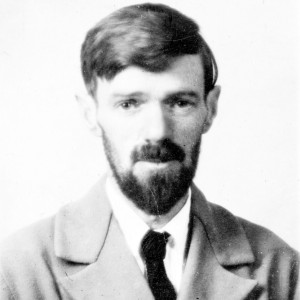
New Year’s Eve
There are only two things now,
The great black night scooped out
And this fire-glow.
This fire-glow, the core,
And we the two ripe pips
That are held in store.
Listen, the darkness rings
As it circulates round our fire.
Take off your things.
Your shoulders, your bruised throat!
Your breasts, your nakedness!
This fiery coat!
As the darkness flickers and dips,
As the fireflight falls and leaps
From your feet to your lips!
D. H. Lawrence
(1885 – 1930)
New Year’s Eve
•fleursdumal.nl magazine
December 31, 2024
More in: 4SEASONS#Winter, Archive K-L, Archive K-L, D.H. Lawrence, Lawrence, D.H.

LUSTWARANDE
2024
07.07 – 06.10.2024
A R B O S
hout in hedendaagse sculptuur
Park De Oude Warande Tilburg
14de editie Lustwarande over het gebruik van hout in de hedendaagse sculptuur. Hoe is het gesteld met hout in de hedendaagse sculptuur?
Er is sprake van een opmars van kunstenaars die hout toepassen in hun werk. Naast traditionele methodes, onderzoeken sommige kunstenaars computergestuurde wijzen van houtbewerking.
Deelnemende kunstenaars: Gerbrand Burger (NL) – Gesine Grundmann (DE) – Roman Gysin (CH) – Abul Hisham (IN) – Milda Lembertaitė (LT) – Bart Lunenburg (NL) – Henrique Oliveira (BR) – Maria Roosen (NL) – Elmo Vermijs (NL) – Tatiana Wolska (PL)
Lustwarande – Platform for Contemporary Sculpture
park De Oude Warande
Bredaseweg 441
Tilburg
T +31 (0)13 545 7573
info@lustwarande.org
https://www.lustwarande.org/
• fleursdumal.nl magazine
More in: Art & Literature News, Exhibition Archive, FDM Art Gallery, Fundament - Lustwarande, Natural history, Sculpture
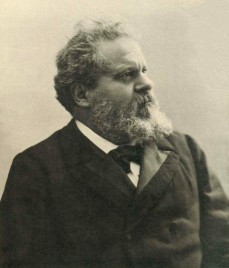
Madrigal
Breaking his way through the white clouds in the azure,
The sun laughs out and cries:
“O Springtime, come!”
Across the greening hills with placid murmurs
The streams sing back to the breeze:
“O Springtime, come!”
“O Springtime, come!” to his heart the poet is saying,
While gazing, O pure Lalage, in thine eyes!
Giosuè Carducci
(1835 – 1907)
Madrigal
• fleursdumal.nl magazine
More in: # Classic Poetry Archive, 4SEASONS#Spring, Archive C-D, Archive C-D

Spring Rain
I thought I had forgotten,
But it all came back again
To-night with the first spring thunder
In a rush of rain.
I remembered a darkened doorway
Where we stood while the storm swept by,
Thunder gripping the earth
And lightning scrawled on the sky.
The passing motor busses swayed,
For the street was a river of rain,
Lashed into little golden waves
In the lamp light’s stain.
With the wild spring rain and thunder
My heart was wild and gay;
Your eyes said more to me that night
Than your lips would ever say….
I thought I had forgotten,
But it all came back again
To-night with the first spring thunder
In a rush of rain.
Sara Teasdale
(1884-1933)
Spring Rain
• fleursdumal.nl magazine
More in: 4SEASONS#Spring, Archive Q-R, Archive S-T, Archive S-T, Teasdale, Sara
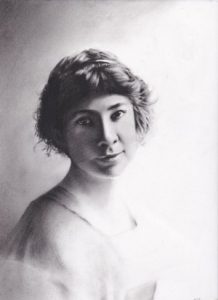
Spring Night
The park is filled with night and fog,
The veils are drawn about the world,
The drowsy lights along the paths
Are dim and pearled.
Gold and gleaming the empty streets,
Gold and gleaming the misty lake,
The mirrored lights like sunken swords,
Glimmer and shake.
Oh, is it not enough to be
Here with this beauty over me?
My throat should ache with praise, and I
Should kneel in joy beneath the sky.
O, beauty, are you not enough?
Why am I crying after love,
With youth, a singing voice, and eyes
To take earth’s wonder with surprise?
Why have I put off my pride,
Why am I unsatisfied,
I, for whom the pensive night
Binds her cloudy hair with light,
I, for whom all beauty burns
Like incense in a million urns?
O beauty, are you not enough?
Why am I crying after love?
Sara Teasdale
(1884-1933)
Spring Night
• fleursdumal.nl magazine
More in: 4SEASONS#Spring, Archive S-T, Archive S-T, Natural history, Teasdale, Sara

Autumn
I dwell alone – I dwell alone, alone,
Whilst full my river flows down to the sea,
Gilded with flashing boats
That bring no friend to me:
O love-songs, gurgling from a hundred throats,
O love-pangs, let me be.
Fair fall the freighted boats which gold and stone
And spices bear to sea:
Slim, gleaming maidens swell their mellow notes,
Love-promising, entreating –
Ah! sweet, but fleeting –
Beneath the shivering, snow-white sails.
Hush! the wind flags and fails –
Hush! they will lie becalmed in sight of strand –
Sight of my strand, where I do dwell alone;
Their songs wake singing echoes in my land –
They cannot hear me moan.
One latest, solitary swallow flies
Across the sea, rough autumn-tempest tossed,
Poor bird, shall it be lost?
Dropped down into this uncongenial sea,
With no kind eyes
To watch it while it dies,
Unguessed, uncared for, free:
Set free at last,
The short pang past,
In sleep, in death, in dreamless sleep locked fast.
Mine avenue is all a growth of oaks,
Some rent by thunder strokes,
Some rustling leaves and acorns in the breeze;
Fair fall my fertile trees,
That rear their goodly heads, and live at ease.
A spider’s web blocks all mine avenue;
He catches down and foolish painted flies
That spider wary and wise.
Each morn it hangs a rainbow strung with dew
Betwixt boughs green with sap,
So fair, few creatures guess it is a trap:
I will not mar the web,
Though sad I am to see the small lives ebb.
It shakes – my trees shake – for a wind is roused
In cavern where it housed:
Each white and quivering sail,
Of boats among the water leaves
Hollows and strains in the full-throated gale:
Each maiden sings again –
Each languid maiden, whom the calm
Had lulled to sleep with rest and spice and balm
Miles down my river to the sea
They float and wane,
Long miles away from me.
Perhaps they say: ‘She grieves,
Uplifted, like a beacon, on her tower.’
Perhaps they say: ‘One hour
More, and we dance among the golden sheaves.’
Perhaps they say: ‘One hour
More, and we stand,
Face to face, hand in hand;
Make haste, O slack gale, to the looked-for land!’
My trees are not in flower,
I have no bower,
And gusty creaks my tower,
And lonesome, very lonesome, is my strand.
Christina Georgina Rossetti
(1830 – 1894)
Autumn
• fleursdumal.nl magazine
More in: 4SEASONS#Autumn, Archive Q-R, Archive Q-R, Rossetti, Christina

Summer
Winter is cold-hearted
Spring is yea and nay,
Autumn is a weather-cock
Blown every way:
Summer days for me
When every leaf is on its tree;
When Robin’s not a beggar,
And Jenny Wren’s a bride,
And larks hang singing, singing, singing,
Over the wheat-fields wide,
And anchored lilies ride,
And the pendulum spider
Swings from side to side,
And blue-black beetles transact business,
And gnats fly in a host,
And furry caterpillars hasten
That no time be lost,
And moths grow fat and thrive,
And ladybirds arrive.
Before green apples blush,
Before green nuts embrown,
Why, one day in the country
Is worth a month in town;
Is worth a day and a year
Of the dusty, musty, lag-last fashion
That days drone elsewhere.
Christina Georgina Rossetti
(1830 – 1894)
Summer
• fleursdumal.nl magazine
More in: 4SEASONS#Summer, Archive Q-R, Archive Q-R, Rossetti, Christina

Winters erfrecht
Gesloten luiken, gezegende ogen.
Het mededogen van sneeuw
verrast zelfs kinderen.
Er gaat geen eeuw voorbij
als er niets gebeurt.
Geheugen van geuren
is legendarisch.
Bert Bevers
Winters erfrecht
Eigen terrein,
Uitgeverij WEL, Bergen op Zoom, 2013
• fleursdumal.nl magazine
More in: 4SEASONS#Winter, Archive A-B, Archive A-B, Bevers, Bert
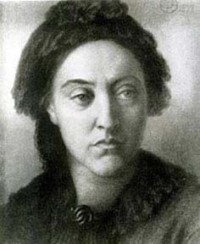
Spring
Frost-locked all the winter,
Seeds, and roots, and stones of fruits,
What shall make their sap ascend
That they may put forth shoots?
Tips of tender green,
Leaf, or blade, or sheath;
Telling of the hidden life
That breaks forth underneath,
Life nursed in its grave by Death.
Blows the thaw-wind pleasantly,
Drips the soaking rain,
By fits looks down the waking sun:
Young grass springs on the plain;
Young leaves clothe early hedgerow trees;
Seeds, and roots, and stones of fruits,
Swollen with sap put forth their shoots;
Curled-headed ferns sprout in the lane;
Birds sing and pair again.
There is no time like Spring,
When life’s alive in everything,
Before new nestlings sing,
Before cleft swallows speed their journey back
Along the trackless track–
God guides their wing,
He spreads their table that they nothing lack,–
Before the daisy grows a common flower,
Before the sun has power
To scorch the world up in his noontide hour.
There is no time like Spring,
Like Spring that passes by;
There is no life like Spring-life born to die,–
Piercing the sod,
Clothing the uncouth clod,
Hatched in the nest,
Fledged on the windy bough,
Strong on the wing:
There is no time like Spring that passes by,
Now newly born, and now
Hastening to die.
Christina Georgina Rossetti
(1830 – 1894)
Spring
• fleursdumal.nl magazine
More in: 4SEASONS#Spring, Archive Q-R, Archive Q-R, Rossetti, Christina
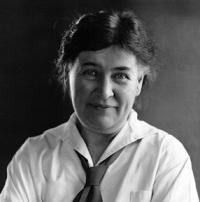
I Sought the Wood in Winter
I sought the wood in summer
When every twig was green;
The rudest boughs were tender,
And buds were pink between.
Light-fingered aspens trembled
In fitful sun and shade,
And daffodils were golden
In every starry glade.
The brook sang like a robin—
My hand could check him where
The lissome maiden willows
Shook out their yellow hair.
“How frail a thing is Beauty,”
I said, “when every breath
She gives the vagrant summer
But swifter woos her death.
For this the star dust troubles,
For this have ages rolled:
To deck the wood for bridal
And slay her with the cold.”
I sought the wood in winter
When every leaf was dead;
Behind the wind-whipped branches
The winter sun set red.
The coldest star was rising
To greet that bitter air,
The oaks were writhen giants;
Nor bud nor bloom was there.
The birches, white and slender,
In deathless marble stood,
The brook, a white immortal,
Slept silent in the wood.
“How sure a thing is Beauty,”
I cried. “No bolt can slay,
No wave nor shock despoil her,
No ravishers dismay.
Her warriors are the angels
That cherish from afar,
Her warders people Heaven
And watch from every star.
The granite hills are slighter,
The sea more like to fail;
Behind the rose the planet,
The Law behind the veil.”
Willa Cather
(1873 – 1947)
I Sought the Wood in Winter
• fleursdumal.nl magazine
More in: # Classic Poetry Archive, 4SEASONS#Winter, Archive C-D, Archive C-D
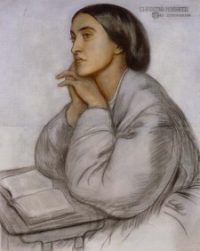
A Wintry Sonnet
A robin said: The Spring will never come,
And I shall never care to build again.
A Rosebush said: These frosts are wearisome,
My sap will never stir for sun or rain.
The half Moon said: These nights are fogged and slow,
I neither care to wax nor care to wane.
The Ocean said: I thirst from long ago,
Because earth’s rivers cannot fill the main.
When springtime came, red Robin built a nest,
And trilled a lover’s song in sheer delight.
Gray hoarfrost vanished, and the Rose with might
Clothed her in leaves and buds of crimson core.
The dim Moon brightened. Ocean sunned his crest,
Dimpled his blue, – yet thirsted evermore.
Christina Georgina Rossetti
(1830 – 1894)
A Wintry Sonnet
• fleursdumal.nl magazine
More in: 4SEASONS#Winter, Archive Q-R, Archive Q-R, Rossetti, Christina
Thank you for reading Fleurs du Mal - magazine for art & literature